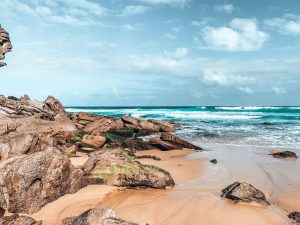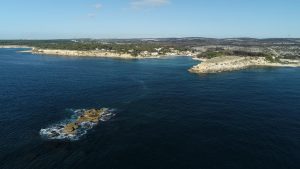As a member of the High Ambition Coalition (HAC) for Nature and People, France is committed to protect 30% of its marine areas and 30% of its land areas, by 2030. In order to reach its 30×30 commitment, the government launched a national strategy for protected areas at the One Planet Summit in January 2021. For the first time, we have a unified strategy for mainland France and the overseas territories that integrates land and sea issues.
The National Strategy for Protected Areas 2030 has several objectives. First, it aims to develop a network of protected areas resilient to global changes. The strong impulse given by the national Strategy has resulted in a significant increase of the surface of the French protected area. Between 2019 and 2020, 3 national reserves, a national park and 3 regional parks have been created; since 2021 there are 7 extra national reserves and 2 more regional parks. 33% of the territory is already protected and many other projects are still underway.
However, the French strategy is not just about expanding the protected area network quantitatively. It also aims to ensure that they are representative of ecosystem diversity, well managed, interconnected and adequately resourced. To meet our commitments, we are working to strengthen the level of protection, improve the management and develop the interconnection of protected areas, targeting particularly some vulnerable ecosystems: forests, wetlands and the coastline.
With these objectives, our national strategy is to create a robust and sustainable network of protected areas that are resilient to global change but also effectively and properly managed. Moreover, our protection strategy aims to restore the balance between nature conservation and human activity. It is thus a source of innovation, particularly through nature-based solutions.
Halting the collapse of marine and terrestrial biodiversity is a huge collective challenge. We have therefore identified two main keys to success:
- First, we are conducting this strategy through and with the territories following a bottom-up process. The strategy sets general objectives that are then through territorial action plans to adapt them to local challenges. All the territories in both metropolitan and overseas France, whether regions, maritime façades or ultra-marine basins, have thus the opportunity to deploy this strategy according to their specific characteristics and challenges.
- Therefore, our strategy relies on a multitude of players (associations, local authorities, public institutions…). They are mobilised to steer, support and monitor adequately the implementation of the strategy. Its implementation is thus facilitate by regular meetings between them, a common platform, technical tools, and a strong support from the French Office for Biodiversity (OFB). This operating mode also makes it possible to deal with the main challenges identified: find the balance between the need for monitoring and the risk of excessive administrative burden.
Example – Parc Marin de la Côte Bleue
The Parc Marin de la Côte Bleue, located on the Mediterranean coast between Marseille and Fos-sur-Mer is a protected area since 1983. A large part of the Park, both marine and terrestrial, is now classified as a Natura 2000 area under the EU Habitats Directive (92/43/EEC) and includes strong protection zones. This Park is a real success story. It demonstrates that it is possible to reconcile environmental protection and economy thanks to the active involvement of all the stakeholders.
Since its creation, fishers have especially been involved in the management and monitoring to ensure artisanal and sustainable fishing activities. This co-management, with the creation of no-take areas, led to an increase of the fish size and density and the species richness with the return of some of them. Concomitantly, the fishery performance have multiplied by seven since the creation of the reserve. The Park also conduct scientific studies and exploration work and propose various activities to make the population aware of the need to protect the environment. These results show how, thanks to a good governance, marine protected areas can ensure the protection of biodiversity while benefiting local communities and the economy.
The implementation of such protection measures requires a long dialogue and awareness raising process among stakeholders. Convincing all the coastal players to support the creation and the development of these areas is a challenge, but this is the key to success. The Parc Marin de la Côte Bleue thus perfectly illustrates that economic activities and restoration may be compatible and benefit the whole community.



